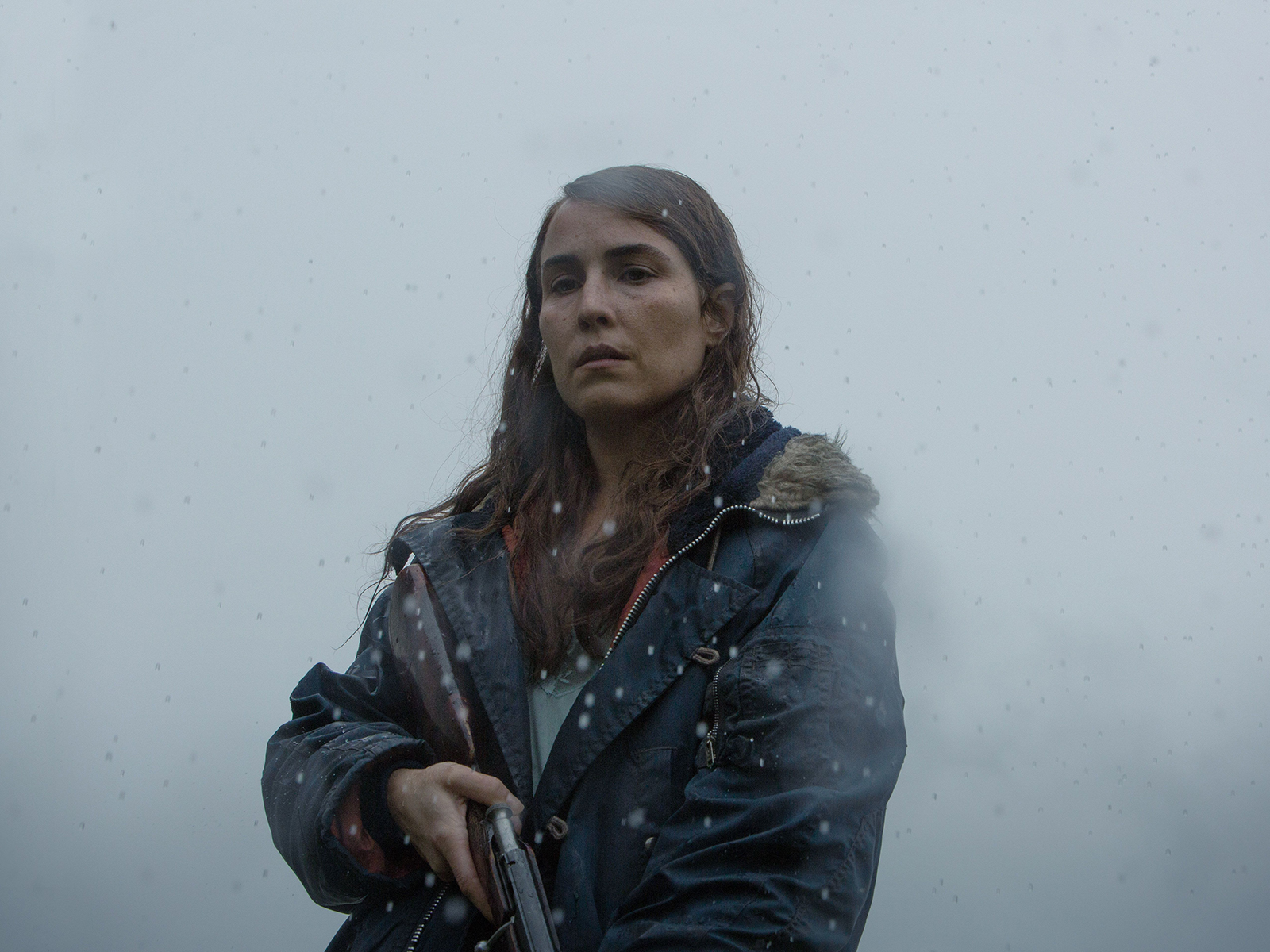
- Festivals
Noomi Rapace Brings “Lamb” to Cannes
In Lamb, a supernatural folktale from first-time director Valdimar Jóhannsson, Noomi Rapace and Hilmir Snaer Gudnason star as a childless couple who discover a mysterious newborn creature. A24 picked up the rights for the film’s release in the U.S. ahead of its Cannes Festival premiere in the Un Certain Regard section.
As is well known, the Swedish actor was catapulted to international stardom after playing the role of Lisbeth Salander in the original 2009 The Girl With the Dragon Tattoo and its two sequels, The Girl Who Played With Fire, and The Girl Who Kicked the Hornets’ Nest. The first film was remade two years later into an English-speaking version by David Fincher with Rooney Mara cast in Rapace’s role.
Over the past decade, Rapace has worked in Hollywood extensively. She appeared in Ridley Scott’s Prometheus, then starred alongside Robert Downey Jr. in Sherlock Holmes: A Game of Shadows, and more recently, teamed with John Krasinski in the Amazon Prime series Jack Ryan.
And now, what seemed to be a step down by mainstream Hollywood logic, Rapace is the star of a low-budget genre film, shot in rural Iceland. First-time writer-director Valdimar Jóhannsson seems to have been influenced by a recent cycle of American horror films, such as The Witch and Hereditary, even if his bizarre and eerie movie lacks the overall impact of those pictures.
“Valdimar didn’t really pitch me the project,” Rapace has said in press interviews. “He just came to my house in London, gave me the script, a visual book and a book of Icelandic poems,” says Rapace. “But as soon as he left, I called my agents and said: ‘I’m doing this no matter what.’ There was no money in it, but it spoke directly to me.”
In Lamb, Rapace teams with Icelandic actor Hilmir Snaer Gudnason (White Night Wedding) as Maria and Ingvar, a childless couple living on a remote farm. One night, they discover a mysterious newborn on their land, and they decide to raise it as their own daughter. Named Ada, she has the body of an infant attached to a head that is not human.
However, as in many dark Nordic folktales, their choice to defy Mother Nature begins to bring chaos and destruction upon them. As the plot unfolds, Lamb becomes a survival horror tale, with one crisis after another spiraling out of control. The central assumption might be absurd, but the atmosphere is consistently disquieting, not least because it takes a whole reel for the viewers to get a real glance at the creature, which benefits from the smart use of special effects.
Those who want to read more into Lamb could see it as an allegory about the way that some parents project their own dreams and desires onto an innocent offspring – at a heavy price, and at the mercy of the world around them.
The tale has only three human characters, who become involved in a power struggle defined by escalating tensions. Pétar, a heavy drinker and once a successful musician, goes from being skeptical of his brother and sister-in-law’s new adoptee to developing a more dangerous mindset. But María is the central figure, a woman most committed to her parenting role, and also conflicted in her feelings towards the two men.
Jóhannsson co-wrote Lamb with Icelandic novelist Sjón, who also scripted Robert Eggers’ forthcoming The Northman. The teaming reflects the sparse nature of all of Sjón’s work, with minimal dialogue and no concern for explaining Ada’s origins; what matters is her impact on the couple.
“In Iceland, the folktales are nature-driven, because that’s what people are afraid of. If you are afraid, you imagine something out there,” says Rapace. “The dark rocks become trolls; the landscape becomes threatening.”
“I knew this kind of story vaguely. I grew up on a farm in Iceland. I was brought up by living very close to life and death,” says Rapace. “Watching my parents deliver baby lambs and then seeing them at slaughter time killing the lambs and eat the meat. For me, making the movie felt like going back to my roots.”
The trailer for Lamb contrasts the natural beauty of rural Iceland with a sense of impending doom. The movie is genuinely scary because, at any moment, an unseen force in the dark outside might looms closer and closer.
“We use the old folklore way of telling our story, very simply and very clearly,” says Rapace. “And also, very Icelandic. People don’t speak a lot here, and there is a calmness even in the most brutal situations. It’s not straight-up horror. It’s more psychologically and internal.”
“For me, this film is about loss and how much this couple is willing to do in order to try and recapture the happiness they once had before, how much they want to make their life more bearable and enjoyable,” she says.
For Rapace, making Lamb has been a different kind of rebirth, manifest in her personal and professional lives. She recalls: “I’ve been on this crazy journey. I left Sweden after The Girl With the Dragon Tattoo and I divorced my husband that same year. My life changed dramatically. I came from a lot of trauma and chaos. Since then, I’ve been rebuilding myself. By coming back to Iceland and shooting this movie, my life came full circle. It was very emotional for me.
“It has made me want to reconnect to my roots, and do to more European cinema, to make less Hollywood action and adventure movies and do more internal and personal dramas.”

